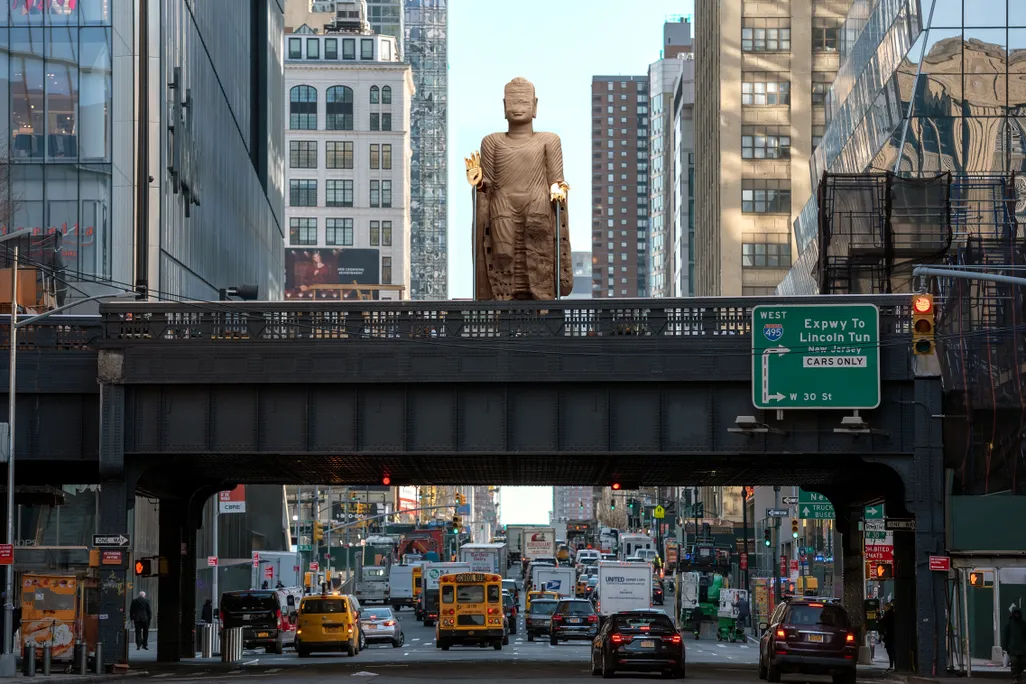Chinese Takeout is a bite-sized, biweekly RADII feature that examines Chinese food from the inside out, by disentangling the (hi)stories behind a single dish or restaurant. Write to us if you have a suggestion or submission.
When it comes to regional Chinese foods, Beijing is arguably the greatest city in the world. People from the country’s diverse provinces and regions all converge on the capital, and every one of China’s provinces has brought its flavors to Beijing — literally.
Each of China’s provinces, provincial-level autonomous regions and municipalities operates a bureau in the capital, not unlike an embassy — and each of these quasi-consulates has a canteen serving regional specialties that is open to the public.
But one of these canteens stands out. Chuan Ban (川办), the restaurant affiliated with the bureau of Sichuan province, is not only good, but also majorly popular — the proverbial “queen bee” of Beijing’s provincial government restaurants.
This popularity might actually be more complex in origin than Chuan Ban’s delectable “twice cooked pork:” it parallels Sichuan cuisine’s own success in recent years.
The Place
The restaurant emanates an aura of old-school prestige, tucked inside an old-school concrete behemoth not far from the axes of power along Chang’an Avenue and Tiananmen Square.

Though the idea of one’s place of work providing a cafeteria for meals was more prevalent during the days when there was more communism, less Meituan delivery, the staff canteen is still a fixture in much of Chinese society. Chuan Ban traces its own heritage back to this origin, when it fed Sichuanese officials a taste of home while they were taking care of business in the capital.
But today, things are a little different. Manager Gao Kai told CNN in 2017 that Chuan Ban has actually privatized, and that today it would be considered an “independent registered company.”
This strategy could have everything to do with the marketability of Sichuan cuisine, which has exploded in the past two decades into a veritable global craze.
The History
As Sichuanese food expert Fuchsia Dunlop once told the New York Times, “Sichuan […] has an incredibly high concentration of restaurants and a fiercely competitive restaurant industry. But it’s certainly true that since the late ’90s, the pace of change has really accelerated.”
That’s around when chain restaurants started springing up across the country, peddling spicy cuisine in regions not traditionally home to it. Sichuan fever hit a (literal) boiling point in the past few months, as businesses and even provincial governments cashed in on a hotpot craze. The traditional capitals of Sichuan cuisine, Chengdu and Chongqing, will soon offer competing museums dedicated to hot pot.
Over the past few years, the craze has spread abroad — even to the US, where the average diner has little knowledge of regional Chinese cuisines. Food bible Eater described New York City as “undergoing a Sichuan renaissance” earlier this year.
The global obsession seems to be more for spice than anything: massive demand for the addictive tingle of ma la (麻辣), the numbing spice for which Sichuanese cuisine is known.
Foods like hotpot and chuanchuan — skewers dipped in spicy broth — are straightforward ways for even lower-rent restaurants to get their customers’ mouths tingling, whereas classic Sichuanese restaurants like Chuan Ban require more skilled chefs.
The Food
Whether it’s because of the lure of Sichuan cuisine or the execution of the dishes themselves, Chuan Ban is an excellent place to be if you’re into the classics. There’s stellar kou shui ji (口水鸡), or “mouth-watering chicken,” a staple dish that features cold chicken soaked in a siren-red chili sauce. The hui guo rou (回锅肉), or twice-cooked pork, which glistens with its own fat, nestled among stir-fried scallions.

Twice-cooked pork (hui guo rou, 回锅肉)
Other provinces — let’s say Henan, for example — don’t quite hold the same culinary cachet, serving dishes that have not taken off as well outside of their homeland.
But look for Sichuan food in Beijing on Chinese food search engine Dianping, and you’ll get twice as many results as from neighboring Shaanxi province (which is much closer to Beijing, and over three times as many as similarly spicy cuisine from Hunan).
The provincial government restaurants are case in point as well. Nearly 20,000 people have reviewed Chuan Ban on Dianping. The government restaurant for Jiangsu? A paltry 483.
Our waitress — as she shoos us out at an early, but customary 9pm sharp — says she’s unaware of the other provincial restaurants. But she also admits that Sichuanese food is her favorite. So when it comes to others, why even bother?

















